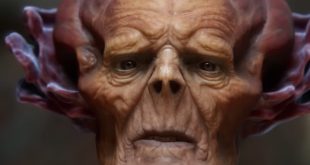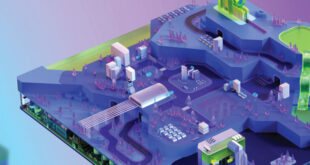This has been an incredibly exciting year for Unity. We released Unity 2.5 in March, which introduced Windows authoring; we closed a round of funding led by Sequoia Capital; we gave our iPhone users a three-fold performance increase when we released Unity iPhone 1.5; and we hosted our third annual user conference entitled Unite, which had more than twice the attendance and the sessions of Unite 2008.
We also released Unity 2.6 and announced that the base version of Unity would, from this point forth, be free. We had a pretty good feeling that it would be big news, but we really had no idea just how huge. The move definitely paid off – we’ve grown our user base by more than 240 per cent and we are still getting more than 600 new users a day.
—
Unity Q&A: Diego Ruiz, Three Melons
One of Unity’s strongest points is how extensible it is. You can create your own custom design tools inside Unity, which can appear as menu items, dockable panes, and custom inspectors. In fact, the entire Unity editor is written in our GUI framework – so anything that we can do, you can do too.
We asked Diego Ruiz, lead engineer at Three Melons, what types of extensions he made for the recently released LEGO Star Wars: Quest for R2-D2.
What tools have you written on top of Unity to empower your designers?
We created many tools to improve the productivity of the level designer. Some of these tools are:
3D Tile Snapper: A ray based tool that lets you snap the 3D tiles that make up the levels.
Adjacent Tile Cloner: A tool that clones the selected tile and places it snapped in a specified direction (up, down, right, left). It basically lets you build a path of tiles very quickly.
Level Decoration: A 3D tile is a GameObject composed of many others. These GOs define if the tile has decals over it or the type of hole the window has.
Object Aligner and Distributor: The level has many objects to pick up like gems. The level designer can just drop them and then perform the alignment and distribution of the gems very quickly.
Rules Verification: All the levels have some non-visual information inside them like spawn points and objectives. We created an editor window that shows if the designer is missing the specification of one of them.
Waypoint Specifier: Lets the designer specify the path of the NPCs. The designer can adjust these while playing the game.
Many menu items: Place an object on the floor, perform a 90 degree rotation on the selected objects, mirror objects, etc.
All of the tools that operate on tiles allow the user to select more than one at a time.
Have you written any tools for those aimed at improving designer workflow? If so, what do they do?
We created a combiner tool based on a grid that performs its job just when the level is loaded. It was a tool aimed for optimisation and it’s transparent for the level designer – he didn’t even touch it. It was very useful for improving the frame rate.
Because we had the goal of running the game on a Pentium III 800Mhz, we had to reduce the draw calls as much as
we could.
—
Unity Spotlight: Max & the Magic Marker
Stats
Developer: Press Play
URL:pressplay.dk
Development Diary:maxandthemagicmarker.com
Target Platform: WiiWare
Release Date: TBD
Awards: Winner: Best Game Design at European Independent Game Awards
Winner: Best Overall at Unity Awards 2009
Runner Up: Best Technical Achievement at Unity Awards 2009
Finalist: Best Visual Design at Unity Awards 2009
One of the highlights at the annual Unite Conference is the Unity Awards, where we acknowledge the very best content being
created in Unity.
One game stood apart from the crowd in both polish and innovative gameplay: Max and the Magic Marker. Its tag line – run, jump, think, draw – sums it up pretty well. The game is the perfect marriage of classic 2D platforming and Crayon Physics-like puzzles. The player controls Max with the Wii Nunchuck and wields the magic marker with the Wii Remote to draw physical shapes with a limited ink supply. Physics are applied to the drawing once the player let’s go of the pen.
The game’s reliance on both action and exploratory physics puzzles leads to a lot of emergent gameplay and replayability – you’re definitely going to want to be on the lookout for this game’s release.
—
Unity Stats:
Price: Unity – Free
Unity Pro – $1500
WEB:www.unity3d.com

 MCV/DEVELOP News, events, research and jobs from the games industry
MCV/DEVELOP News, events, research and jobs from the games industry



